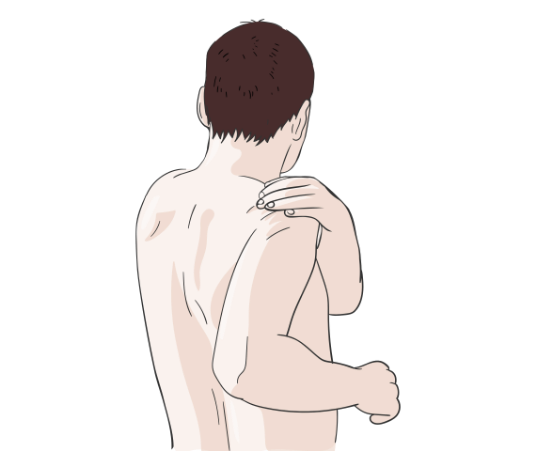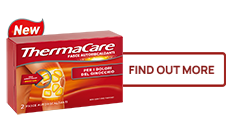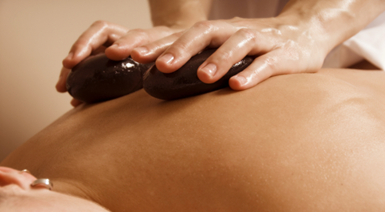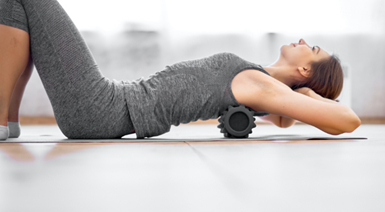Joint pain
The generic term “musculoskeletal system” covers everything a person needs to move, i.e. muscles, joints, bones, tendons and ligaments. Pain that originates in the musculoskeletal system is called musculoskeletal pain.

Contents:
In contrast to stress pain that occurs during physical exertion, pain from movement slows us down in normal, everyday movements. The joints are often affected: almost one person out of two in his mid-40s complains of joint pain - and in many 30-year-olds, the first joint changes due to wear and tear can be detected. Acute joint inflammation (arthritis), injuries and metabolic disorders (e.g. gout as a result of high uric acid levels) are also responsible for joint pain.
400
Almost 400 different diseases can cause joint pain.
How does joint pain develop and what are its causes?
Almost 400 different diseases are known in medicine to be associated with joint pain. Therefore, the search for the causes is a great challenge. This makes it all the more important to describe this pain with its many faces precisely and to classify it according to uniform diagnostic criteria. Three important questions - about the course, the rhythm of pain and signs of inflammation - help healthcare professionals make a diagnosis.
- Acute or chronic joint pain?
-
Acute joint pain usually occurs quickly and severely, while chronic joint pain develops slowly over weeks and months. If the pain is permanent and progresses chronically, medical experts speak of chronic-progressive; if the pain is only acute and intermittent, it is called acute-remitting. If a joint suddenly hurts without any external injury, it must be clarified whether acute arthritis (sudden inflammation of the joint) is present. Acute arthritis can be the first sign of a number of rheumatoid-inflammatory joint diseases. Only an accurate diagnosis leads to a successful therapy.
- When does pain occur in the joint?
-
Start-up pain sets in at the beginning of a movement. It is typical of joint changes caused by degeneration. Night or resting pain occurs when the joint is “resting”, and often troubles patients at night. Resting pain can have many causes. It is often the result of inflammatory diseases of the joints. But it also robs us of sleep after overloading joints. In contrast, strain pain can only be triggered by stressing the joint – among other things, in the case of injuries (traumatic lesions) or inflammatory or degenerative changes.
- Is the joint inflamed?
-
In contrast to arthritis (joint inflammation), pure arthralgia (joint pain) does not show any classic signs of inflammation such as redness, heating and swelling. Arthralgia usually occurs in the context of arthrosis or injuries, but also as a harbinger of infectious diseases such as flu. Rheumatoid arthritis is the most common inflammatory joint disease (and is often accompanied by arthralgia). In rheumatoid arthritis, a malfunction of the immune system leads to chronic inflammation, which occurs in episodes and usually leads to joint degeneration. Typical complaints: Morning stiffness of the finger and wrist joints, pain and swelling.

The knee - front-runner in terms of joint wear and tear
Wear and tear is the main cause of pain in the joints. One-sided, uniform movements or constant overloading, be it at work or during hobbies and leisure time can lead to a regression of the cartilage layer in the joint . When there is a painful grinding in the joint, medical experts speak of arthrosis. The knee is most often affected. This makes it the front-runner in terms of joint pain, followed by hip and foot arthritis. In the back, the small vertebral joints often cause problems, but the most common cause of back, lower back and neck pain is muscle stiffness.
What helps relieve joint pain
Parents, recreational athletes and of course the professionals know how important and crucial cold is as a first aid measure for many injuries. Whether it’s a thumb trapped in a door, the hammer that has fallen on a foot or the wounds after a tackle on the football field - in the case of injuries, the right immediate treatment often decides the extent of the pain and the duration of the injury. Cold therapy has a local analgesic effect. It doesn’t decrease Swelling and it is not an antinflammatory therapy. Drainage is improved by compression.
- Memos for unlucky patients
-
The POLICE formula for the initial treatment of sports injuries. is so memorable that everyone can initiate it in exactly the right order without much thought in an emergency. It consists of the following steps:
P = Protection
OL = Optimal Load
I = Ice
C = Compression
E = ElevationProtection: if you suffer an injury the first thing you have to do is to protect you injured part. For example, if you have an ankle sprain best advice for you is to get your ankle protected by a taping.
Optimal Load: most people think that the best way to recover from an injury is rest. Myth busted, rest is not our best choice: you can do as much as you are able to, without feeling pain, or tolerating a little bit of pain.
Ice: You can relieve the initial pain with ice packs or cooling sprays. If necessary, a cold compress will do the trick. Cold therapy constricts the vessels, which block the pain receptors in the skin and reduce the pain-triggering impulses. Therefore: Cool injuries in the ankle or knee area for 10 to 15 minutes.
Compression. To prevent and treat swelling as much as possible, the next step is to apply a compression bandage. A pressure bandage is particularly important for effusions on the joints, after strains and bruises.
Elevation: Elevating the injured parts of the body can help prevent or at least contain swelling and bleeding into the tissue. The most effective position for the injured body parts is above heart level, as this optimises the return flow of blood and restricts the blood supply.
Please note: The extent of an injury is not always recognised immediately. After initial care, contact a doctor or go to the hospital to determine the severity of the injury and receive the appropriate treatment.
- Chronic sports injuries
-
Chronic sports injuries often develop as a result of inadequately healed acute injuries or persistent incorrect or excessive strain on the musculoskeletal system, e.g. due to excessive training or incorrect technique. If the body can no longer compensate for the excessive load, the soft tissues near the joints (e.g. bursa, tendons, tendon sheaths, ligaments and joint capsules) repeatedly cause minor injuries and inflammatory reactions. Painful irritations develop as a result. Typical examples include tennis elbow or golfer’s elbow - two similar pain syndromes that not only tennis players and golfers suffer from. Elbow tendinosis can also develop as a result of overexertion or regular movements in the household or at work.

Treat joint pain
Whether tennis elbow, tendinosis, bursitis or knee pain due to overload or cartilage damage - a combination of cold from the outside and anti-inflammatory from the inside is a good therapy option for acute and chronic injuries and joint pain.
Once the initial care has been given according to the POLICE principle, acute joint pain can be further treated with a cooling pain gel. It is best to use a gel that contains an anti-inflammatory agent.
FREQUENTLY ASKED QUESTIONS
- What helps with joint pain
-
For painful Joints after acute injury or inflammation cold therapy could be the best choice, combined with an analgesic and anti-inflammatory pain gel. In case of chronic or recurring joint pain, you should go to the doctor and clarify the cause.
- What home remedies help with joint pain?
-
In the case of acute joint pain, such as after an injury, cold therapy combined with a compression bandage and elevated positioning are the most helpful. Other forms of joint pain are more likely to need heat treatments. Please seek medical advice in the event of chronic or recurring pain in the joints.
- What cream helps with joint pain
-
For joint pain, a cooling, analgesic and anti-inflammatory pain gel usually helps. Please seek medical advice if the pain in the joint cannot be relieved by a cooling pain gel.



